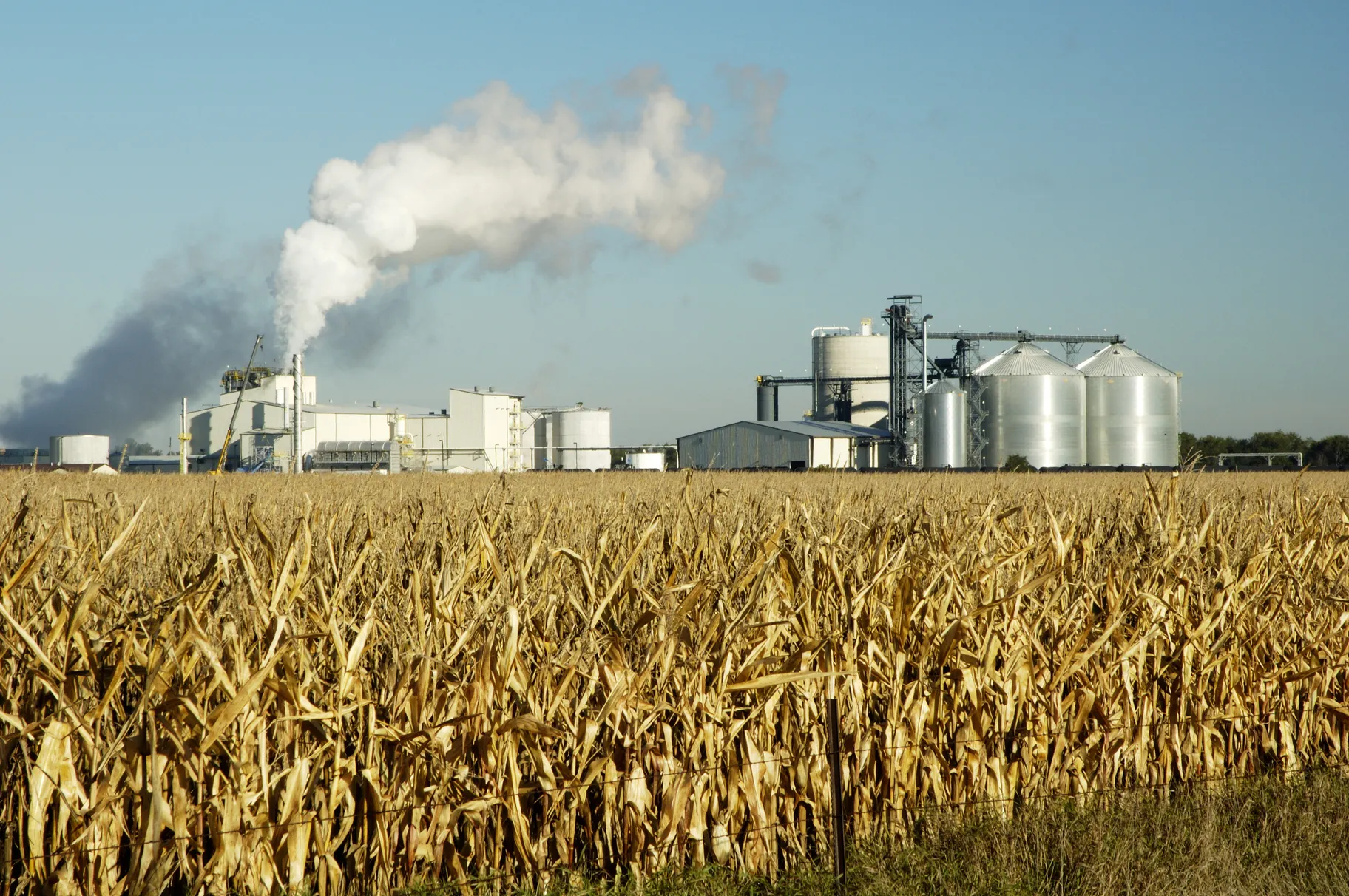There may not be much on which Donald Trump and Joe Biden agree but one thing unites them (and almost every other American politician)... corn subsidies. Shortly after George W. Bush declared the nation "addicted to oil," the U.S. government began offering subsidies to farmers, leading to a dramatic increase in the use of corn-based ethanol. More corn is grown across the nation for fuel than for consumption either by animals or humans. Tom Philpott considers alternatives that give back and, quite possibly, save farmland.
Philpott explains that nearly 90 million acres of corn is planted in the U.S., primarily in states clustered around Iowa aka the Corn Belt. About 45% is used to feed livestock and 30% is turned into ethanol, with the remainder being used in processed food ingredients.

An ethanol production plant in South Dakota. Photo via Shutterstock.
In the 1970s, when gas prices skyrocketed and OPEC instituted an embargo, many politicians, including President Jimmy Carter, began looking for alternatives to burning gasoline in automobiles. They turned to pure grain alcohol from corn, Philpott explains. The government juiced the offer by giving oil companies a tax break for every gallon of ethanol added to gasoline. In 2006, the Renewable Fuel Standard mandated the practice.
The problem, says Philpott, is that when corn is planted in the same place year after year, it's ruinous for soil, a non-renewable resource. He thinks agrivoltaics, the mixing of solar panels and crops, is a better solution. Solar panels in fields could generate the same amount of energy using a fraction of the land, and we wouldn't have to choose between growing crops and supporting alternative energy sources.
